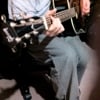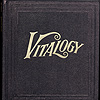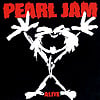Recording Question
Milhouse VanHouten
Posts: 755
Hi guys, I've just started to get into recording, and I was hoping you could help me out here. I've got an old Tascam Porta 02. I was contemplating purchasing a used Pod 2.0 and recording straight into the Portastudio. Is that an acceptable setup, or do I need any other gear to run straight into the Portastudio? Thanks.
"Of course it hurts. You're getting fucked by an elephant."
Post edited by Unknown User on
0
Comments
-
nope. that's all you'd need.0
-
A guitar, some cables, and maybe a stompbox or two (to taste).
Enjoy!...and if you don't like it, you can suck on an egg.0 -
hey milhouse, what kinda jack does that thing have for a mic? Liek fancy one or just a 1/4" one. Is it easy to use?I miss you already, I miss you always
I miss you already, I miss you all day0 -
MissYouAllDay wrote:hey milhouse, what kinda jack does that thing have for a mic? Liek fancy one or just a 1/4" one. Is it easy to use?
it's just 1/4" outputs. all you need are standard cables.0 -
inputs you mean? What are those other fancy mic connectors anyway? Anyone know?I miss you already, I miss you always
I miss you already, I miss you all day0 -
MissYouAllDay wrote:inputs you mean? What are those other fancy mic connectors anyway? Anyone know?
you mean the three pin XLR connections?0 -
Are those the connectors usually on high end mics? If so yes. And then are they easily converted to 1/4" plugs?I miss you already, I miss you always
I miss you already, I miss you all day0 -
MissYouAllDay wrote:Are those the connectors usually on high end mics? If so yes. And then are they easily converted to 1/4" plugs?
i think you can get adapters but there are all sorts of balanced/unbalanced/impedance issues i think. i've never had cause to look into it so i don't know.
paging mig.0 -
exhausted wrote:paging mig.
Okay...
Mics using Extra-Long-Run signal format (XLR) use a balanced, three-pin, low-resistance (lo-Z) cable.
Mics using a regular 1/4" phono-plug are unbalanced, two-conductor, high-resistance (hi-Z).
Professional mics use XLR, because 1) signals can travel longer (up to 1/4 mile before noticable signal degradation); 2) signals are cleaner, and avoid buzz and static; and 3) provide a sturdier connection between mic, cable, and equipment.
You can get adapters that will convert an XLR cable to 1/4". However, most of them convert to 1/4" TRS (tip-ring-sleeve) for balanced, line-level (as opposed to mic-level) signals, and do not convert the resistance, providing in diminished sound quality. There are some transformer-coupled versions:
http://www.musiciansfriend.com/srs7/g=live/search/detail/base_pid/330151/
These will work better for converting the signal, but you may be limited by the amount of gain available (1/4" hi-Z mics typically require much less gain than professional XLR mics)....and if you don't like it, you can suck on an egg.0 -
mccreadyisgod wrote:Okay...
Mics using Extra-Long-Run signal format (XLR) use a balanced, three-pin, low-resistance (lo-Z) cable.
Mics using a regular 1/4" phono-plug are unbalanced, two-conductor, high-resistance (hi-Z).
Professional mics use XLR, because 1) signals can travel longer (up to 1/4 mile before noticable signal degradation); 2) signals are cleaner, and avoid buzz and static; and 3) provide a sturdier connection between mic, cable, and equipment.
You can get adapters that will convert an XLR cable to 1/4". However, most of them convert to 1/4" TRS (tip-ring-sleeve) for balanced, line-level (as opposed to mic-level) signals, and do not convert the resistance, providing in diminished sound quality. There are some transformer-coupled versions:
http://www.musiciansfriend.com/srs7/g=live/search/detail/base_pid/330151/
These will work better for converting the signal, but you may be limited by the amount of gain available (1/4" hi-Z mics typically require much less gain than professional XLR mics).
should this recording/impedence thread also include a discussion of signal buffers for guitar? such as the popular, VHT Valve-u-lator?My Girlfriend said to me..."How many guitars do you need?" and I replied...."How many pairs of shoes do you need?" She got really quiet.0 -
Pacomc79 wrote:should this recording/impedence thread also include a discussion of signal buffers for guitar? such as the popular, VHT Valve-u-lator?
Not necessarily...
The THD tube buffer unit is to convert signals that have to go through lots of pedals, many of them not true-bypass, and with extended runs to between guitar and pedals, and pedals and amp. It basically gives the guitar's natural signal a bit of a kick so it can survive being pushed through so many stages of unbalanced cable and transistor boxes....and if you don't like it, you can suck on an egg.0 -
What sucks here is that so many of the low end 4 tracks and some 8 tracks only have the 1/4" connector. It looks like I will have to save for an mbox or E-MU system.I miss you already, I miss you always
I miss you already, I miss you all day0 -
MissYouAllDay wrote:What sucks here is that so many of the low end 4 tracks and some 8 tracks only have the 1/4" connector. It looks like I will have to save for an mbox or E-MU system.
They're really easy to work with if you have an external mixer or preamp...
The worst thing is, the mic pre's that are included in the recorders that have them are usually really bad.
That's the nice thing about the USB interfaces... they have pretty good-quality stuff... the MBox is a perfect example, with two Focusrite preamps....and if you don't like it, you can suck on an egg.0
Categories
- All Categories
- 149K Pearl Jam's Music and Activism
- 110.2K The Porch
- 280 Vitalogy
- 35.1K Given To Fly (live)
- 3.5K Words and Music...Communication
- 39.3K Flea Market
- 39.3K Lost Dogs
- 58.7K Not Pearl Jam's Music
- 10.6K Musicians and Gearheads
- 29.1K Other Music
- 17.8K Poetry, Prose, Music & Art
- 1.1K The Art Wall
- 56.8K Non-Pearl Jam Discussion
- 22.2K A Moving Train
- 31.7K All Encompassing Trip
- 2.9K Technical Stuff and Help



